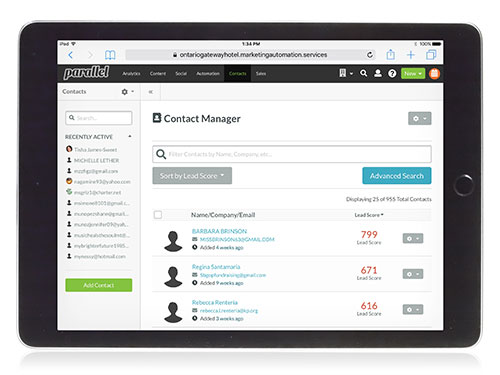In today’s digital evolution, a chief marketing officer is tough to tell apart from a chief technology officer.
Some companies’ CMOs may actually spend more on technology than their CTOs. According to Forrester Research’s latest forecast, US companies will be spending $120 billion on building a marketing technology stack by 2021.
It’s rare to encounter a growing company that doesn’t use some form of marketing technology. Marketing tech is really any technology, usually software, that helps you accomplish your marketing goals. Whether you want to make it easier to manage user data, improve customer engagement, or strategize future outreach, there’s a marketing tech tool to help. Choosing tools wisely and strategically integrating the technology into your sales flow is essential if you want to maximize your marketing ROI – and who doesn’t?
What Makes a Best-in-Class Marketing Technology Stack?
Most companies use multiple marketing tech platforms, together referred to as a “stack.” Coordinating between each platform to share and enhance customer data, personalize messages, track, and respond to changing customer behaviors is key to creating an effective digital sales flow. This tailored approach to a customers’ journey creates personal experiences with your brand and substantially greater returns on your time spent reaching them. How you manage the technology is everything, and there is no one-size-fits-all solution. The better you understand your buyer’s journey, the better you can map a marketing stack to match that journey. There are a few common denominators in a best-in-class marketing technology stack:
Customer Relationship Management
Among the most adopted, easily integrated technology, customer relationship management (CRM) solutions, such as SharpSpring or Salesforce, capture and respond to customer / client data, opportunities, and sales activity.
Market Automation Platforms (MAP)
Software such as SharpSpring, Hubspot, or Marketo monitor how customers interact with content, websites, and campaigns to adapt and create a more precise lead-flow process.
Sales Enablement / Analytics Platforms
A mass repository of customer data is studied from all sides by companies like Seismic or BigTinCan to uncover hidden trends and insights about how your audience interacts with content. That information is made available for marketers to highly-nuance market segments and allows sales to take immediate action based on those insights.
Account-Based Marketing (ABM)
B2B sales teams are adopting efficient account-based marketing systems like Engagio to target high-value accounts, prospects and partners, then custom-create campaigns to reach them.








